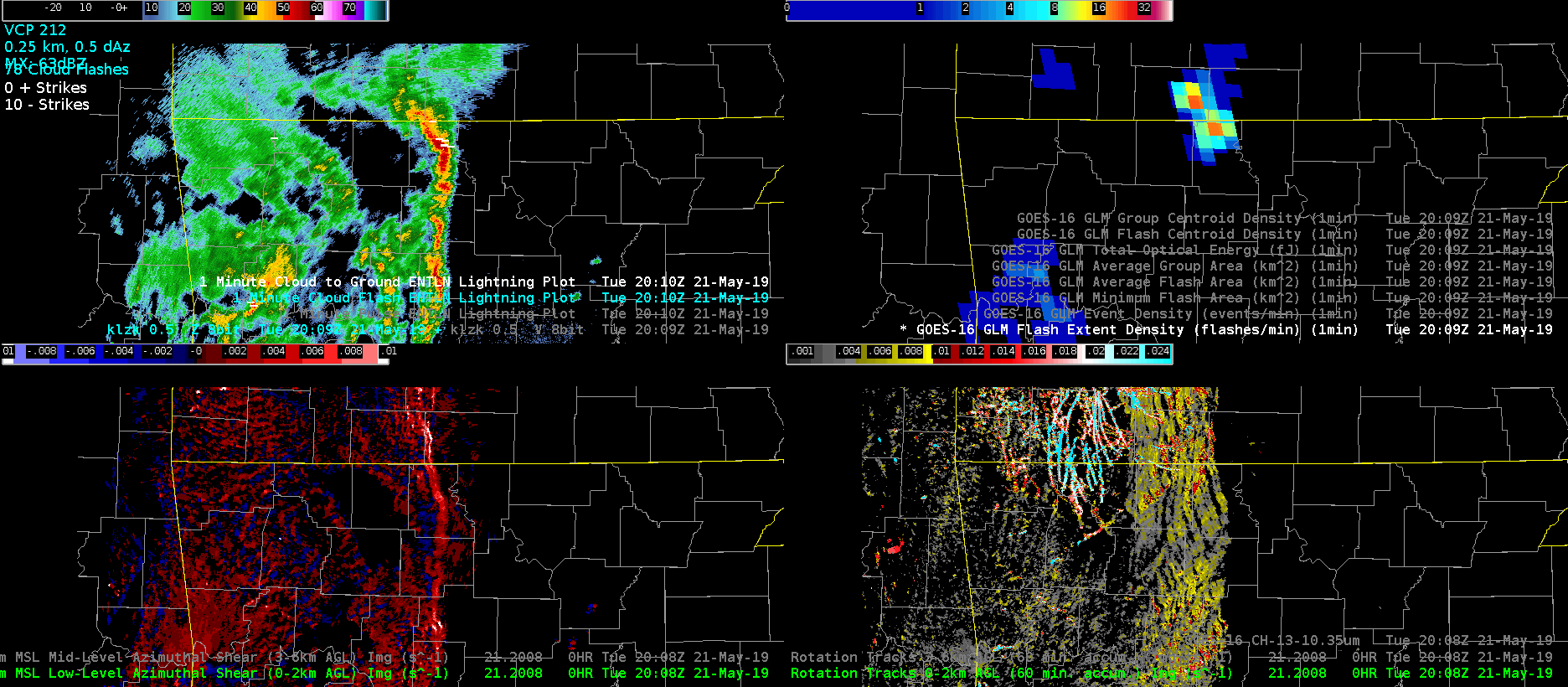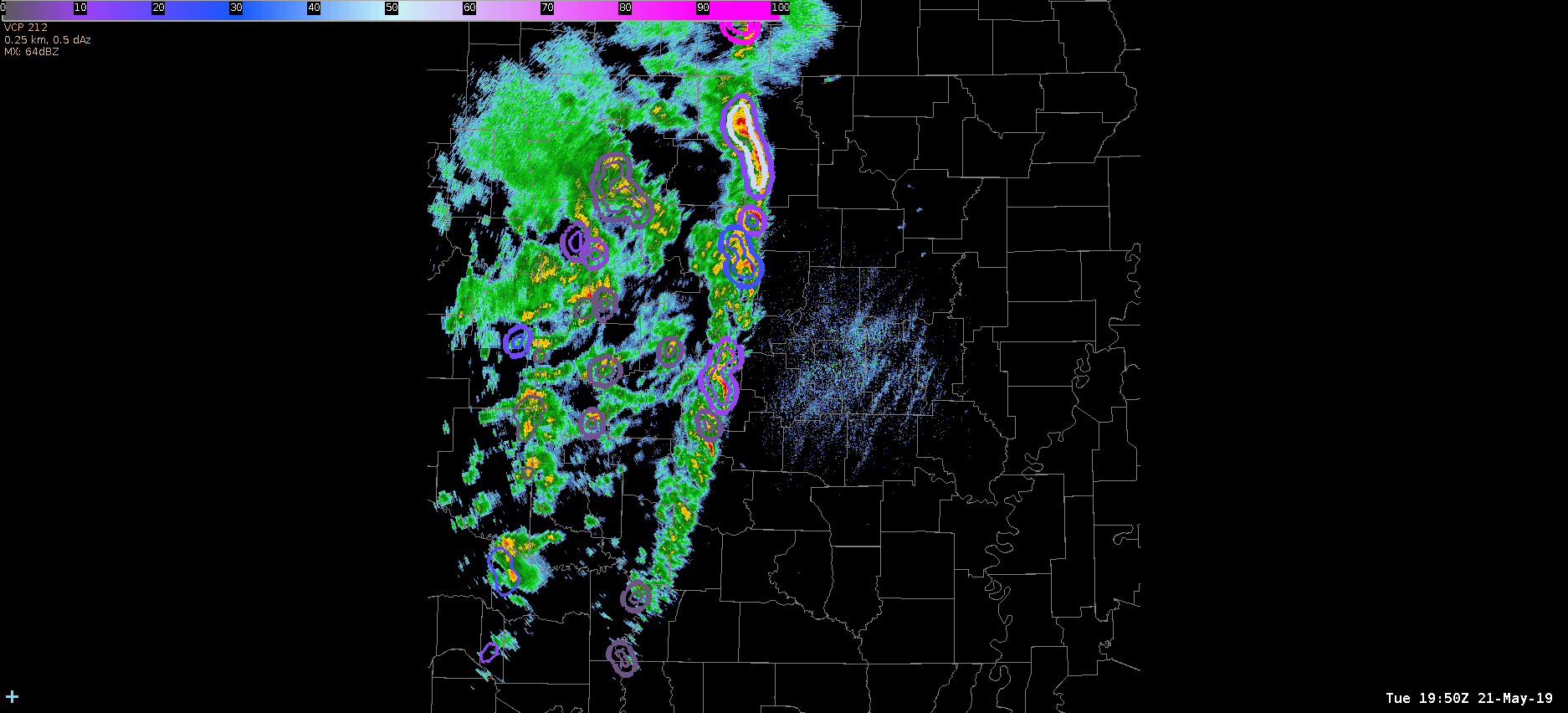
Dealiasing problems in northwest Arkansas and southwest Missouri carried over to the operational version of the azimuthal shear rotation tracks. The azimuthal shear in the lower left panel uses a new dealiasing suppression algorithm, which effectively eliminated the noise. Fortunately, the noise with the current operational version of azimuthal shear was in a stratiform area of precipitation well behind the convective line, making it easy to ignore this data. Sampled winds in the region of the erroneous rotation tracks were very high — up to 80+ kts.

By focusing my attention on the azimuthal shear associated with the leading edge of the QLCS, and analyzing Probsevere data and trends, I was able to anticipate a strengthening of the line. The Probwind component was only 32% at 1934Z, then steadily increased, reaching 89% at 2012Z. At 2030Z there was a LSR of trees and power lines down in Mountain Home, Arkansas. Probtor increased to 65% at 2014Z, and as this storm shifted north into southern Missouri, there was a report of a blown out store front in Hartville, MO. It has not been confirmed whether or not there was a tornado. However, the increasing Probtor values increased my confidence for severe straight line winds that are often associated with strong mesovorticies. Depending on the event, Probtor trends and values could be used as a confidence builder to increase my warning wind speeds from 60 to 70 mph or 70 to 80 mph. Roy
